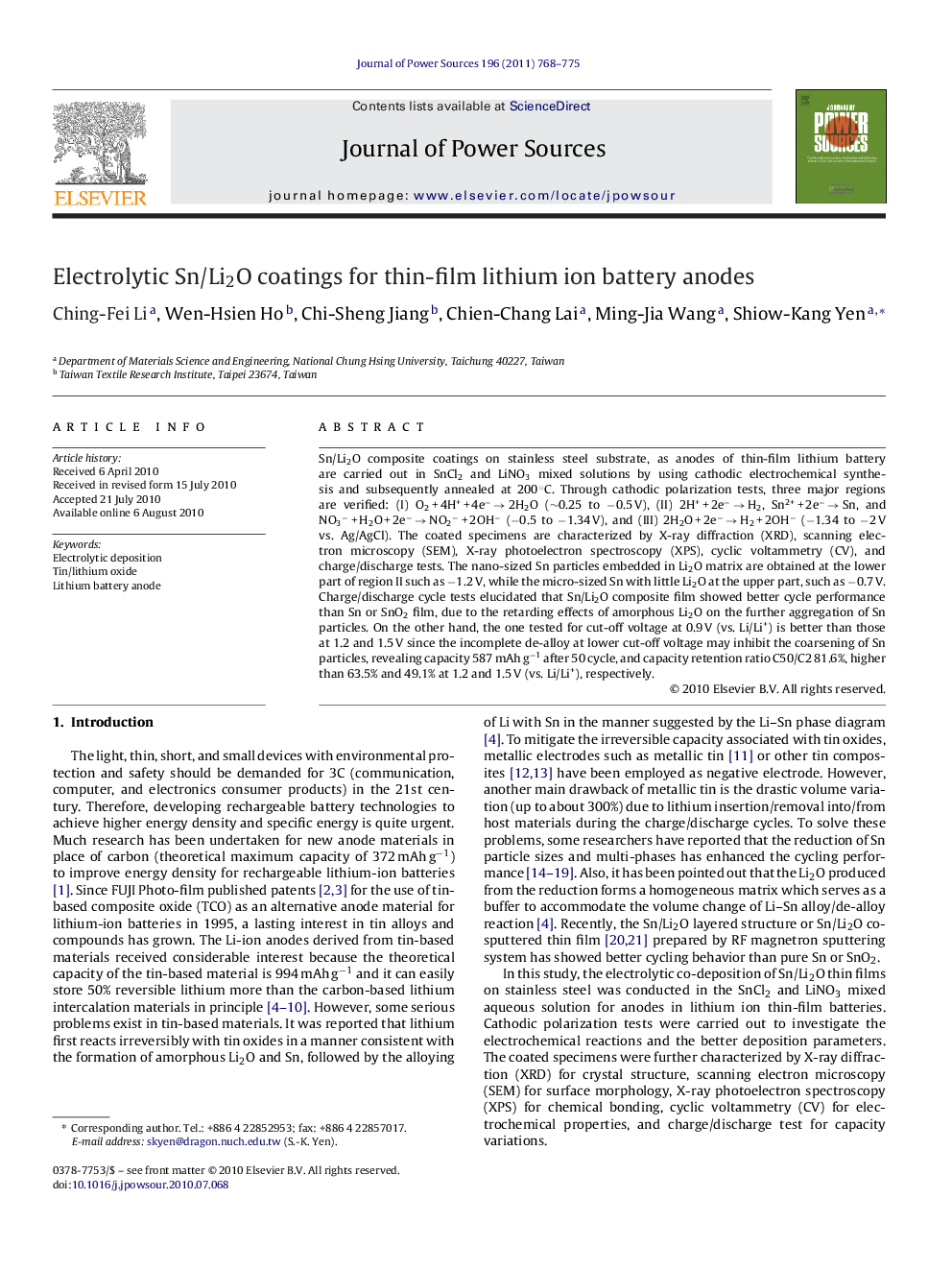| Article ID | Journal | Published Year | Pages | File Type |
|---|---|---|---|---|
| 1284829 | Journal of Power Sources | 2011 | 8 Pages |
Sn/Li2O composite coatings on stainless steel substrate, as anodes of thin-film lithium battery are carried out in SnCl2 and LiNO3 mixed solutions by using cathodic electrochemical synthesis and subsequently annealed at 200 °C. Through cathodic polarization tests, three major regions are verified: (I) O2 + 4H+ + 4e− → 2H2O (∼0.25 to −0.5 V), (II) 2H+ + 2e− → H2, Sn2+ + 2e− → Sn, and NO3− + H2O + 2e− → NO2− + 2OH− (−0.5 to −1.34 V), and (III) 2H2O + 2e− → H2 + 2OH− (−1.34 to −2 V vs. Ag/AgCl). The coated specimens are characterized by X-ray diffraction (XRD), scanning electron microscopy (SEM), X-ray photoelectron spectroscopy (XPS), cyclic voltammetry (CV), and charge/discharge tests. The nano-sized Sn particles embedded in Li2O matrix are obtained at the lower part of region II such as −1.2 V, while the micro-sized Sn with little Li2O at the upper part, such as −0.7 V. Charge/discharge cycle tests elucidated that Sn/Li2O composite film showed better cycle performance than Sn or SnO2 film, due to the retarding effects of amorphous Li2O on the further aggregation of Sn particles. On the other hand, the one tested for cut-off voltage at 0.9 V (vs. Li/Li+) is better than those at 1.2 and 1.5 V since the incomplete de-alloy at lower cut-off voltage may inhibit the coarsening of Sn particles, revealing capacity 587 mAh g−1 after 50 cycle, and capacity retention ratio C50/C2 81.6%, higher than 63.5% and 49.1% at 1.2 and 1.5 V (vs. Li/Li+), respectively.
